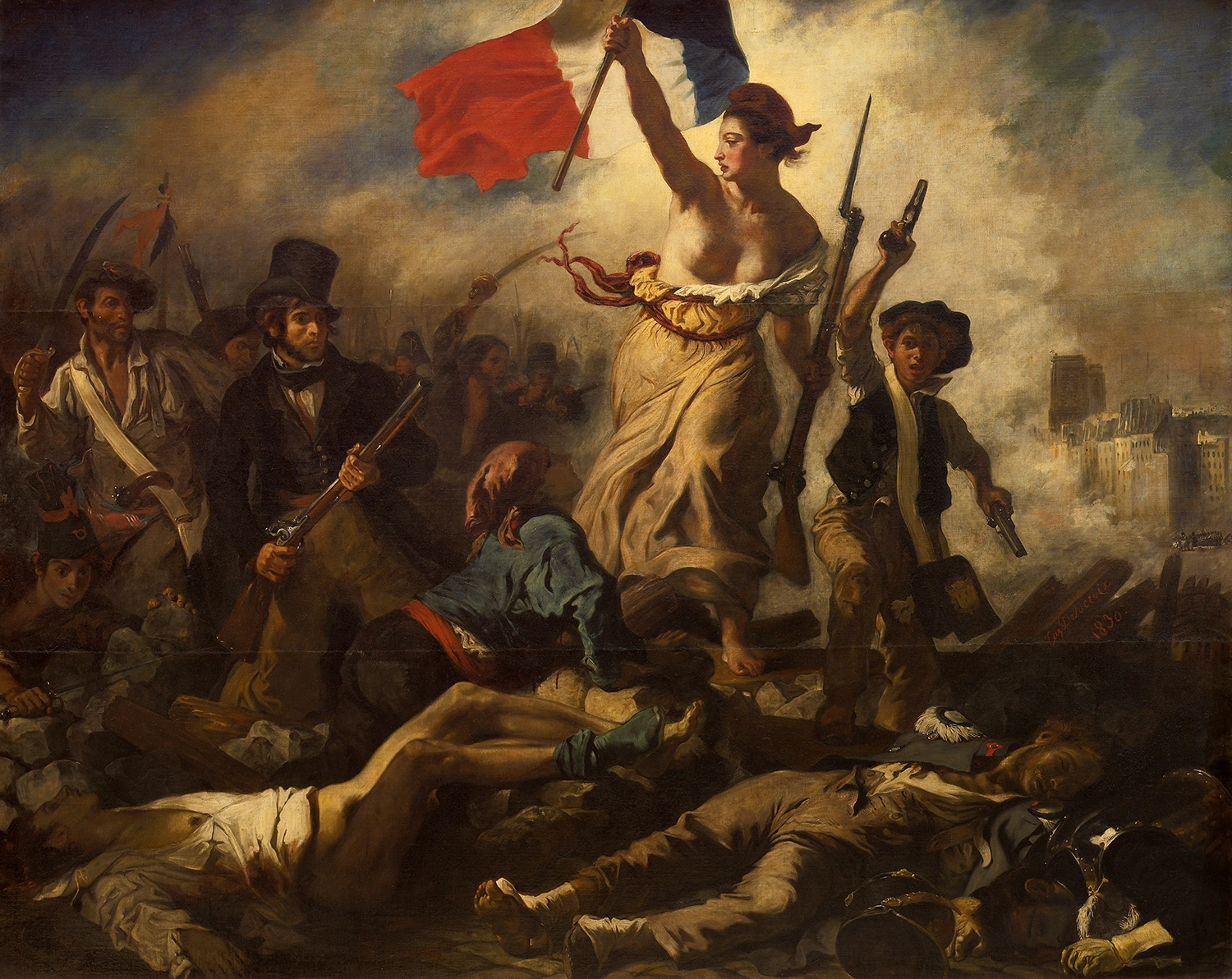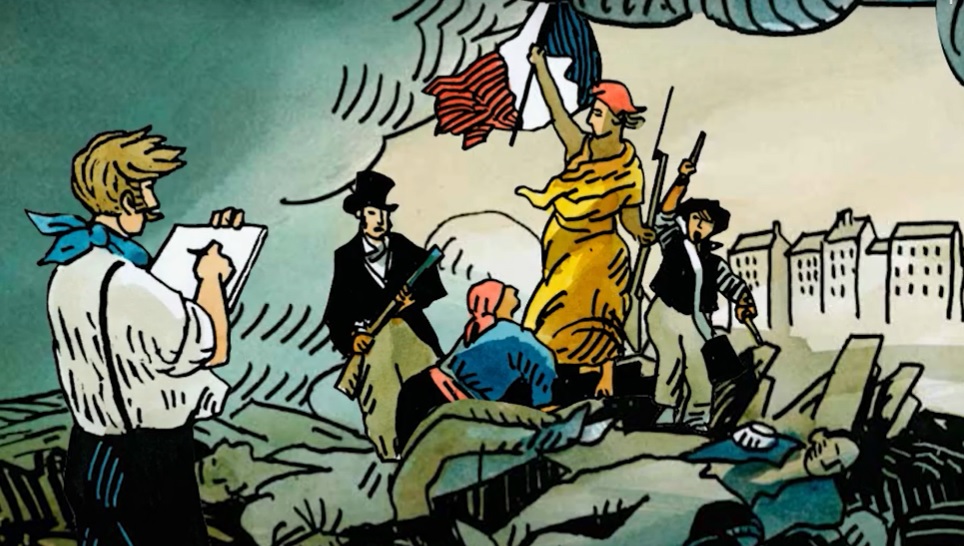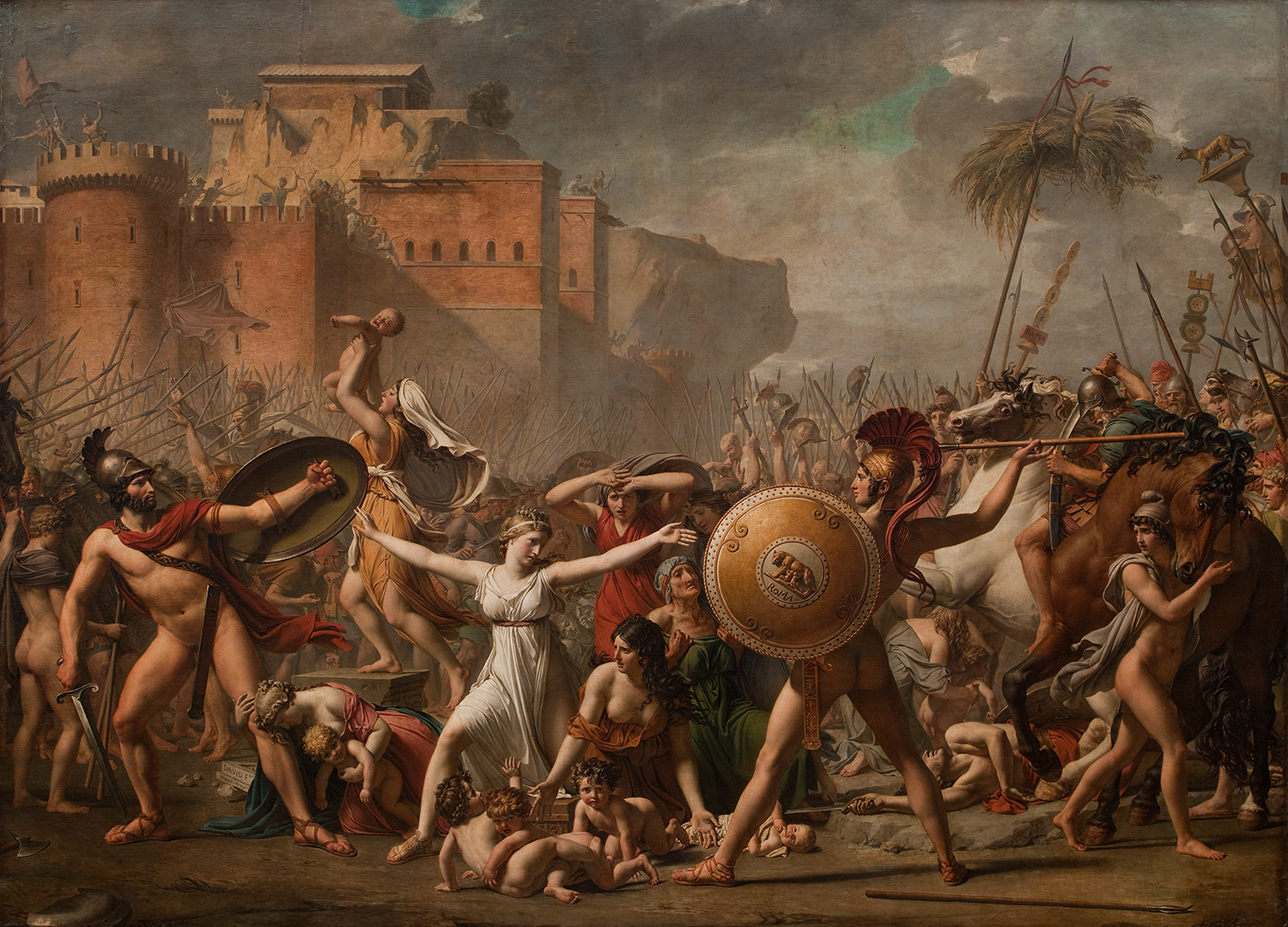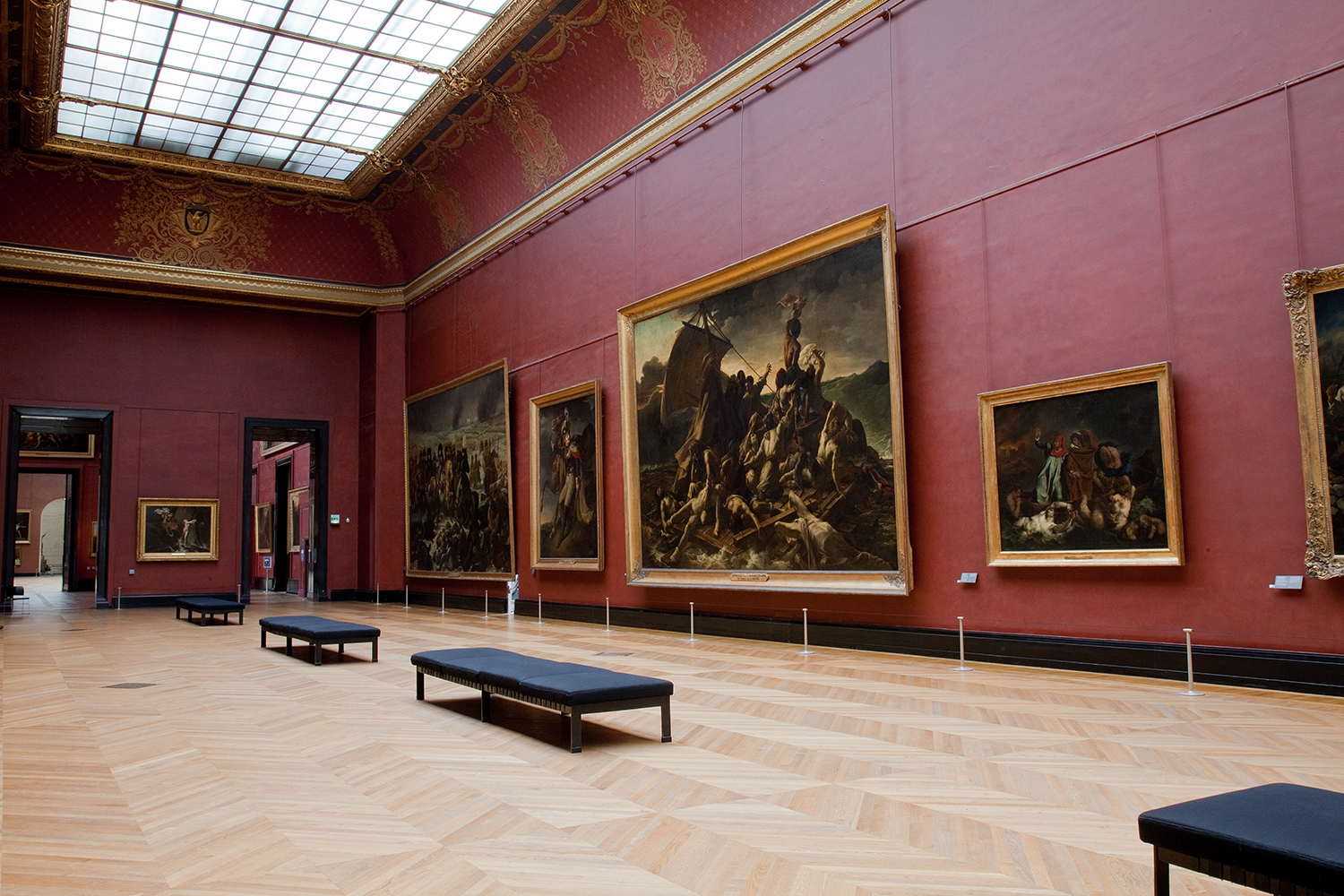Ingres Grande Odalisque Deviated From the Principles of Classical Art by Quizlet
Retrieve large! Les Salles Rouges (The Red Rooms)

The Red Rooms, which derived their name from the colour of their walls, are dwelling house to some of the largest paintings in the Louvre, including masterpieces by the greatest 19th-century French painters from David to Delacroix.
The largest French paintings in the Louvre
Napoleon I reportedly exclaimed '1 can walk through this painting!' when he saw Jacques-Louis David's depiction of his coronation ceremony. At vi metres high and virtually ten metres wide it is certainly an impressive work, giving the viewer a sense of actually attending the anniversary. That is the outcome that these huge history paintings can create – so it was important to find an exhibition space that would do them justice.
A Second Empire ornamentation
The Red Rooms were part of Napoleon III's project to expand the museum and give information technology splendour worthy of his majestic status; the red and gold decoration, created in 1863 by Alexandre Dominique Denuelle, contributed to that goal. The predominantly brown tones of the paintings stand out against the red background. The rooms originally presented works past 17th- and 18th-century French masters, with large 19th-century paintings added afterward. Compositions by the greatest names in French painting – such as Jacques-Louis David, Théodore Géricault and Eugène Delacroix – are at present displayed side by side on the walls.

Prestigious history painting
Apart from famous portraits such equally Madame Récamier by Jacques-Louis David and Mademoiselle Rivière by Jean Auguste Dominique Ingres, most of the works in the Red Rooms fall into the 'history painting' category, traditionally regarded in France every bit the most important and prestigious. The history in question can exist modernistic (Napoleon's battles by Antoine Jean Gros), classical / mythological (Aurora and Cephalus past Pierre-Narcisse Guérin) or biblical ( The Flood , by Anne-Louis Girodet). Some artists opted for 'exotic' subjects such as Delacroix'south The Death of Sardanapalus , or, more than unusually, recent events with a political bear upon: Théodore Géricault'southward The Raft of the Medusa.
La Grande Odalisque
YouTube content is currently blocked. Please change your cookie settings to enable this content.
Romanticism and modernity
The Raft of the Medusa
Unusually for his period, Géricault began to work on this huge painting without having been commissioned. The resulting composition was a history painting, but based on a recent effect rather than a 'prestigious' historical subject. The figures in the scene are not mythological heroes or brave warriors, simply victims of a shipwreck, forced to resort to cannibalism to survive. The painter chose the bleakest moment, when they saw the transport that would somewhen rescue them sailing away in the altitude.
This painting, outset exhibited in 1819, was more than just a depiction of a tragedy. After the fall of the First Empire in 1815, the Bourbon kings had returned to power and the shipwreck discredited the newly restored monarchy: the helm of the Medusa had obtained his position on the forcefulness of his connections with power rather than his competence; in fact, he had not sailed at all in the past twenty years! Unable to forestall the ship from running aground, he left function of his crew to migrate on a makeshift raft.

Liberty Leading the People
Delacroix is all-time known today for this painting. It was inspired by the 'Three Glorious Days' of the July 1830 Revolution when the people of Paris rose upwardly confronting King Charles 10.
The Parisians are depicted breaking through a barricade. The female figure at the top of the composition – office classical goddess, office woman of the people – urges the oversupply forrard and waves the tricolour flag. She is presented every bit a symbol of Freedom. Delacroix deliberately used the colours blue, white and cherry in combination several times in his painting: the French flag, a symbol of the 1789 Revolution then of the Empire, was banned when the Monarchy returned to power between 1815 and 1830. This famous allegorical/historical painting, often referenced in art and ad, stands equally a symbol of liberty and liberty fights.


Masterpieces in the Red Rooms
-

Jacques-Louis David, The Intervention of the Sabine Women
Did you know?
A special red
The Scarlet Rooms have been renovated several times since the 19th century. In 1969, the famous painter Pierre Soulages contributed to the creation of the colour red for their walls, drawing inspiration from the cherry-red used in paintings constitute at Pompeii.

More to explore
Source: https://www.louvre.fr/en/explore/the-palace/think-big
0 Response to "Ingres Grande Odalisque Deviated From the Principles of Classical Art by Quizlet"
Post a Comment